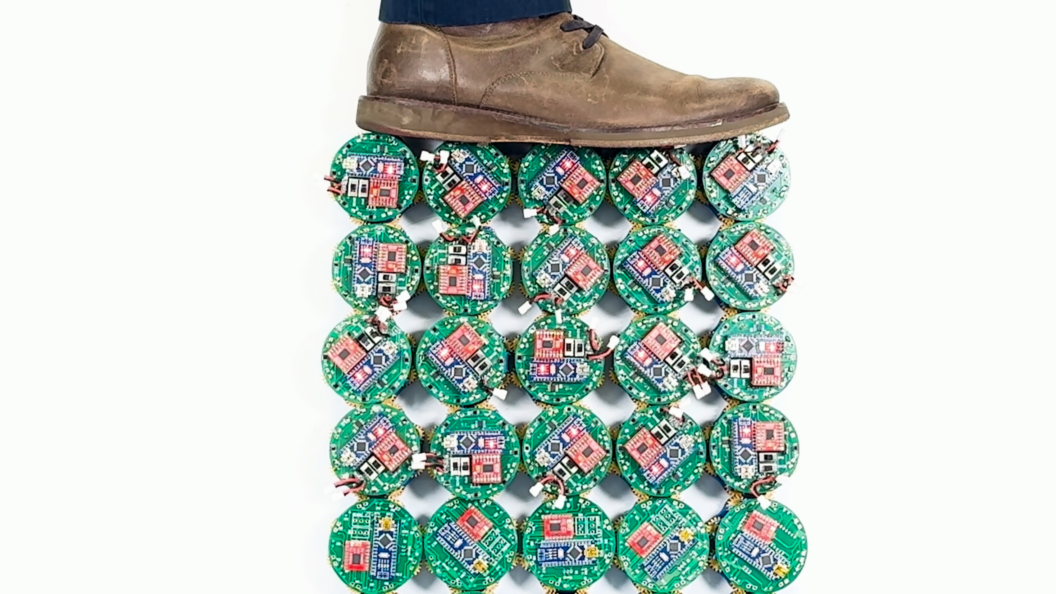Pioneering Research Bridges Science Fiction and Reality in Robotics
In a fascinating intersection of cutting-edge science and popular culture, researchers at the Max Planck Institute of Molecular Biology and Genetics in Dresden are exploring shape-shifting robotics inspired by the iconic T-1000 character from Terminator 2: Judgment Day. Led by Professor Otger Campàs, the research draws parallels between the extraordinary capabilities of fictional characters and real-life biological processes occurring in embryos.
Embryos and Robotics: A Groundbreaking Connection
“I saw this movie when I was a child—it was like, ‘Wow, can you imagine,’ I thought, ‘being able to do this?’” reflects Campàs, reminiscing about the impact the film had on him. In a unique twist, he posits that the T-1000’s fluid-like transformations are not just fiction; they bear a striking resemblance to how embryos develop in nature. During embryonic development, cells engage in a series of movements and transformations that allow them to form various tissues and organs, a process that the research team aims to replicate in robotic systems.
Campàs and his team have developed a robotic collective composed of individual units programmed to mimic the behavior of embryonic cells. This collective is capable of transitioning between solid and liquid states, allowing it to change shape dynamically—similar to the T-1000’s abilities on screen. “We were thinking how we could engineer robots that would do the same,” Campàs explains, emphasizing the goal of merging biological principles with robotic engineering.
Mechanisms Behind the Magic
The inspiration for this innovative research comes from biological processes known as fluidization and convergent extension. These mechanisms are crucial for the coordination of cell behavior in embryos, enabling them to effectively form the complex structures that will become organs. By understanding these processes, researchers believe they can enhance robotic design to create systems that are more adaptable and capable of traversing a variety of environments.
Speedy time-lapse imaging of embryonic development has revealed how tissues can shift between solid and fluid states during organ formation. “Tissues in embryos can switch between solid and fluid states to shape the organs,” Campàs notes, underscoring how these biological observations are informing the design of their robotic units.
Implications and Future Prospects
The implications of this research extend far beyond mere technical novelty. As robots become increasingly integrated into various aspects of society—from manufacturing to healthcare—the ability to adapt and change shape could revolutionize how these machines operate. For instance, robots with fluidity in their physical forms could potentially navigate through tight spaces in disaster scenarios, assist in surgical procedures, or even adapt their structures to perform specific tasks more efficiently.
While the research is still in its early stages, the foundational knowledge being assembled may lead to practical applications that seem like science fiction today. However, this push for fluid shape-shifting technology is not without its challenges, including the need for precise control of robotic movements and energy efficiency.
A Fusion of Science Fiction and Reality
As Campàs works to translate the imaginative qualities of the T-1000 into tangible technology, the project raises intriguing questions about the future of robotics and its alignment with biological principles. This research not only showcases the exciting developments in engineering but also reminds us of the ways in which popular media can inspire scientific inquiry.
In conclusion, the work being conducted by Professor Campàs and his team illustrates a remarkable synergy between biology and technology, reflecting a growing trend in research that seeks to learn from natural processes to solve complex engineering challenges. As they strive to make the seemingly impossible achievable, the vision of shape-shifting robots may one day become a reality, turning the extraordinary capabilities of the T-1000 from fiction into a practical application of science.









